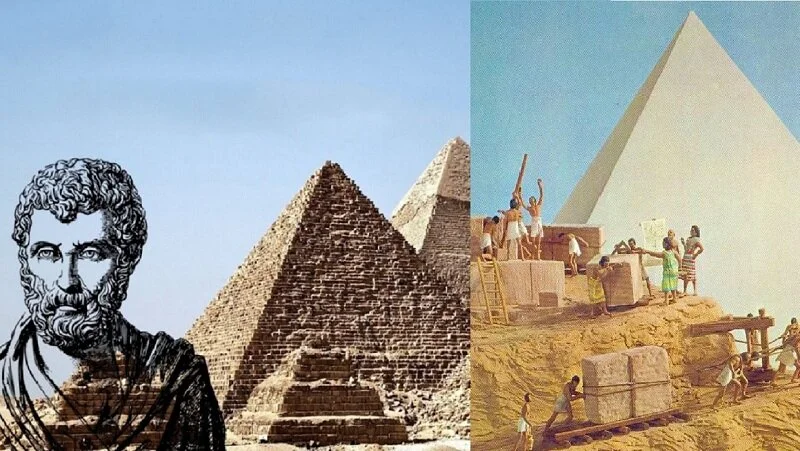Another myth has collapsed: No slaves built the pyramids of Egypt
New archeological finds in Egypt document a new historical version of the construction of the pyramids, which tells that they may not have been built by slaves. Twelve skeletons belonging to pyramid builders were found in wells three meters deep. They were perfectly preserved with dry sand and contained jars of beer and bread for the afterlife. The brick tombs date from the 4th Dynasty from 2575 BC to 2467 BC and are located on the outskirts of Cairo. Herodotus described the builders of the pyramids as slaves, and according to Egyptologists, this myth spread through Hollywood movies.
The captive Israelites did not build the pyramids
Recent finds at a site discovered by a tourist in 1990 show that the workers were paid, not enslaved, according to the archeologist Zahi Hawass. The discovery sheds more light on the lifestyle and origins of the skilled workers who built the pyramids. If so, it appears that they were not recruited from the slave communities that existed in Egypt, thus disproving the Hollywood myth that Israeli slaves built the pyramids.
Amihai Mazar, a professor at the Department of Archeology at the Jewish University of Jerusalem, says the myth stems from a false claim by former Israeli Prime Minister Menachem Begin during a 1977 visit to Egypt that the builders were Jews. Mazar claims that the pyramids were not built by Jews because there were no Jews in the area at the time.
Egyptologists claim that the builders of the pyramids were from poor families in the north and south and were famous for their skills. It was also considered an honor for those who lost their lives during construction to be buried in tombs near the sacred pyramids of their Pharaohs. Had they been slaves, they would not have been buried with such honor.
The tombs did not contain gold or valuables, which protected them from looting in ancient times, while the bodies of the dead were not mummified. The skeletons were found buried, with their heads facing west and their feet facing east, according to ancient Egyptian beliefs, and there were containers full of provisions for the afterlife.
The marks on the skeletons bear witness to the hardships
The men who built the great pyramids of Giza ate meat regularly and worked in three-month shifts. The daily consumption was 21 cattle and 23 sheep. It took 10,000 workers over 30 years to build a single pyramid, about one-tenth of the labor Herodotus estimated when he visited Egypt around 450 BC. Although they were not slaves, the builders of the pyramids had a life of hard work. Their skeletons show symptoms of arthritis and marks on their spines, evidence of intense exertion. The discovery reinforces the view that the builders of the pyramids were free men, ordinary citizens, but lived short lives and suffered from poor health, probably as a result of their hard work.
Source: Guardian









